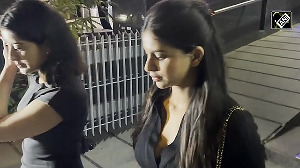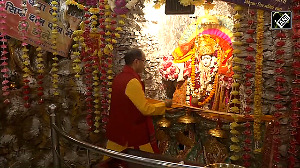While India is catching China in motorbike sales, it lags far behind in cars, which use more petrol per journey.

India's thirst for gasoline - the fuel most used by passenger vehicles - has soared 12.6 percent in the first six months of the year from 2015.
Sanjay Kumar is beaming with joy. The 23-year-old has just bought a used motor scooter, his first, for Rs 30,000 ($445), after years of saving together with his mother.
He says the Maestro Scooter by Indian motorbike maker Hero will let him ferry his mother for shopping trips as well as navigate New Delhi's chaotic roads between part-time jobs.
"We never had the kind of income to buy a vehicle. Now I can take my mother on my bike for local shopping, and work otherwise. I can easily cut down on my travel time and avoid congestions by using my scooter," he said.
Sanjay is one of millions of new motor scooter riders who have helped push the pace of India's oil demand growth well past China's.
Yet as long as this growth is driven by mopeds, not cars, the oil industry's hopes that India will become a pillar of oil demand to match the giant Chinese market are set to be disappointed.
India's thirst for gasoline - the fuel most used by passenger vehicles - has soared 12.6 percent in the first six months of the year from 2015, growing at more than double the pace of China.
However, its overall gasoline consumption at around 544,000 barrels per day is less than a fifth of China's 2.8 million bpd.
At the core of India's fuel consumption growth are small motorbikes.
Some 16.5 million new units were sold in 2015/16, according to industry and manufacturing data, up from 11.8 million in 2010/2011, making it the world's second biggest sales market after China, which sold 24.6 million motorbikes last year.
New motorbike sales in India are expected to reach 19 million by 2018, said Roy Kurian, vice president for sales and marketing at Yamaha Motor India Sales.
NO NEW CHINA
But while India is catching China in motorbike sales, it lags far behind in cars, which use more petrol per journey.
Modern motorbikes have a fuel efficiency of over 100 miles per gallon (mpg). Older models may only reach around 50 mpg, but that's still about twice as efficient as most cars.
Sales of new four-wheeled passenger vehicles in China hit almost 25 million last year, double the volume in 2010.
India's car sales are measly by comparison. New passenger vehicle sales have stagnated below 3 million a year since 2010.
Monthly sales of less than 215,000 are well below their historic peak of just over 300,000 half a decade ago.
India's poor roads and choked cities favour bikes over cars, but the most important factor is price.
India's average monthly salary of around $120 remains far below China's average of over $9,000, making motorbikes the default choice for the swelling number of young commuters.
Small motorized two-wheelers cost Rs 25,000 to Rs 50,000 ($370 to $750) compared with Rs 200,000 to Rs 500,000 ($3,000 to $7,500) for the cheapest new cars.
India-based credit rating agency ICRA says the income levels of average Indians have risen 8-9 percent a year for the past five years.
In a population where 65 percent of people are under 35, and where financing options are improving, this has supported the two-wheeler market.
"Commuting is a basic necessity, (but) in metropolitan areas and cities we have a public transport system that is not good enough," said Yamaha's Kurian.
"Two-wheelers have become an automatic choice because of the traffic chaos and parking issues in almost every city," he said, adding that a lack of public transport and poor roads outside cities were also boosting sales in rural India.







 © 2025
© 2025